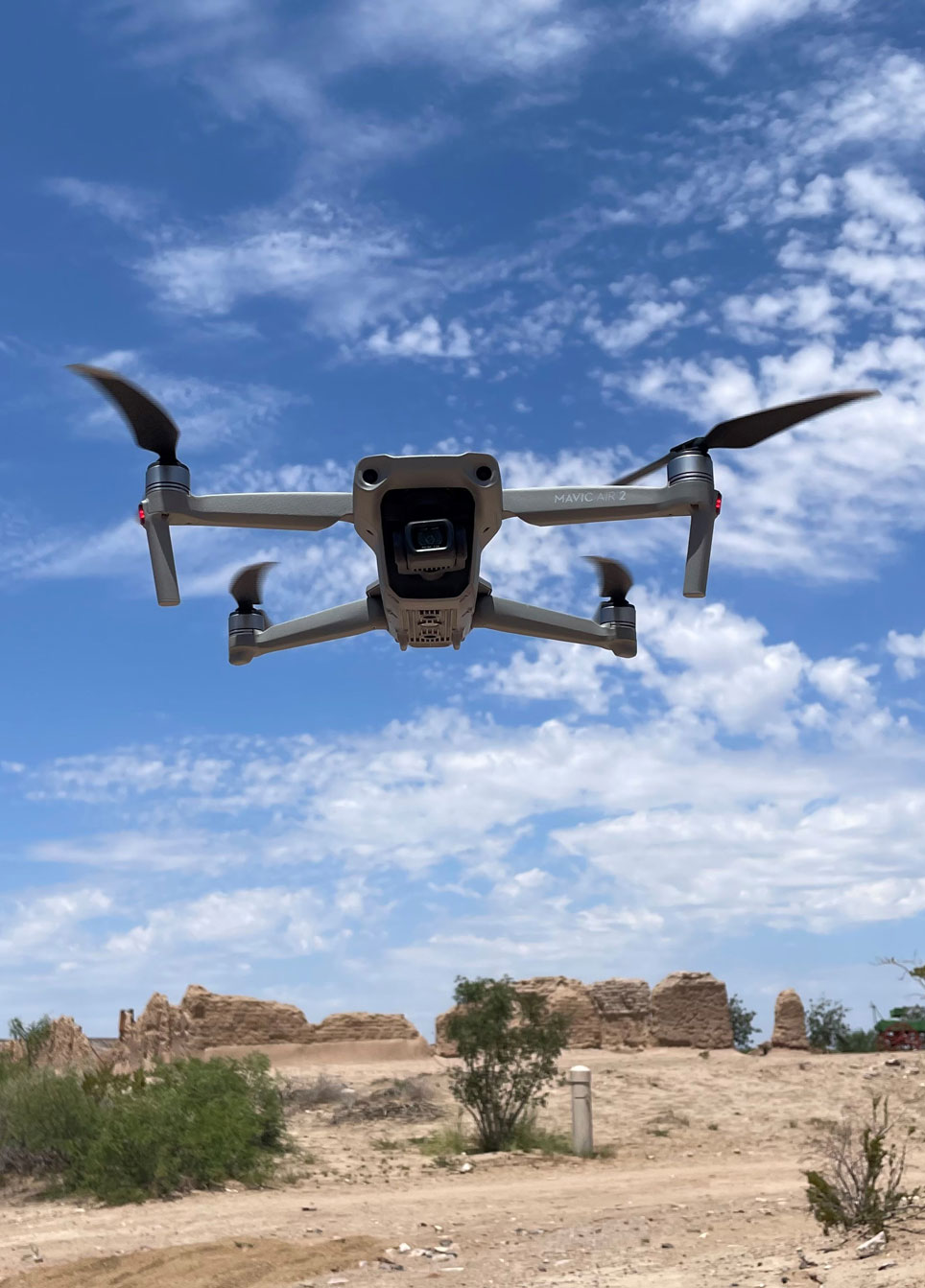Cultural Scans for an Interactive 3D Experience (SITEs)
Using photogrammetry and Light Detection and Ranging (LiDAR) to create three-dimensional (3D) models of historical sites in New Mexico.

Using Tech to Look Back in Time
New Mexico is the fifth largest state in the U.S., dotted with tens of thousands of years of evidence of human presence. With that much land to cover and history to explore, discovering and preserving it all can be a monumental task. The archeologists and conservationists working in the state are up against challenges of funding, resources, and the ravages of an increasingly extreme climate. These groups aim to preserve the evidence of historical peoples and tell their stories to tech-savvy audiences.
To help tell these stories, Northrop Grumman is collaborating with the New Mexico Humanities Council (NMHC) on the project Cultural Scans for an Interactive 3D Experience (SITEs). Northrop Grumman teams use photogrammetry and LiDAR to create detailed, lifelike models of structures and artifacts that can be used as a resource for cultural groups, for schools, for museums and more, as well as to track erosion and damage over time. This technology enables us to capture sites with minimal disturbance, as some important historical, cultural sites are in areas that are difficult to access or are susceptible to damage with increased traffic and activity. Leveraging technology to take people to a site virtually can protect the site while also providing opportunities for assessing damage and raising awareness of its cultural value.
The Cultural SITEs
The Cultural SITEs team completed scans at two New Mexico Sites—Fort Selden and Sevilleta.

Fort Selden
The first site was Fort Selden, where team members leveraged existing technology (i.e., a DJI Mavic Air 2 drone and a Sony a7R IV still camera) to capture terrestrial and aerial imagery of the site. The team processed the images to create a 3D model of the current site, and completed additional modeling to create a 3D model of the site as it looked in the 1800s.
Fort Selden was built where a campsite once existed on El Camino Real, a trade route established by indigenous peoples in North America and leveraged by Spanish in the 1500s to settle New Mexico. In the 1800s, the fort itself was constructed and used as an outpost for the U.S. Military, including four units of Buffalo Soldiers.
The site lies on the border with traditional homelands of both Mescalero and Chiricahua tribes. The NMHC has a relationship with the tribes, ensuring that any cultural work done there has their awareness.
Sevilleta Pueblo
The first site was Sevilleta Pueblo, where LiDAR was used to map existing mounds. The pueblo, which originated around the 13th century, was one of more than a dozen Piro villages at the time of Spanish colonization in the early 1600s.
Sevilleta was the site of one of four missions established among the Piros by Franciscan missionaries. It is the only one with accessible remains today; the site is the best preserved by far of all surviving Piro pueblo ruins.
Although the ancestral Piro province was abandoned in the 1680s, Piro descendants continue to live in many of New Mexico’s Pueblo communities.
Expanding the T4C Initiative
Cultural SITEs expands the mission of Northrop Grumman’s Technology for Conservation (T4C) initiative, in which engineers use technology to aid conservation work while growing their skills. Traditionally, those partner groups have focused on the natural world, but Cultural SITEs brings in the humanities conservation that employees and communities also value. These scans allow the public to explore and better understand the cultural importance of natural and historic sites while protecting them from unnecessary destruction. T4C is part of Northrop Grumman's Sustainability Goals.
Are you interested in technology and innovation? We are too. Check out Northrop Grumman career opportunities and consider joining our team.
Environmental Sustainability at Northrop Grumman
We're introducing next-gen sustainability! Our new goals encompass our operations (footprint), value chain (handprint) and impact on our planet and communities (blueprint).

Out of SITE
On a hot day in July, Northrop Grumman Research Scientist Jennifer VanBerschot and a team of engineers walked between several adobe mudbrick structures at Fort Selden in southern New Mexico.
The site represents the layered history of New Mexico, and Jennifer and the Cultural Scans for an Interactive 3D Experience (SITEs) team were there to help tell these stories using technology.